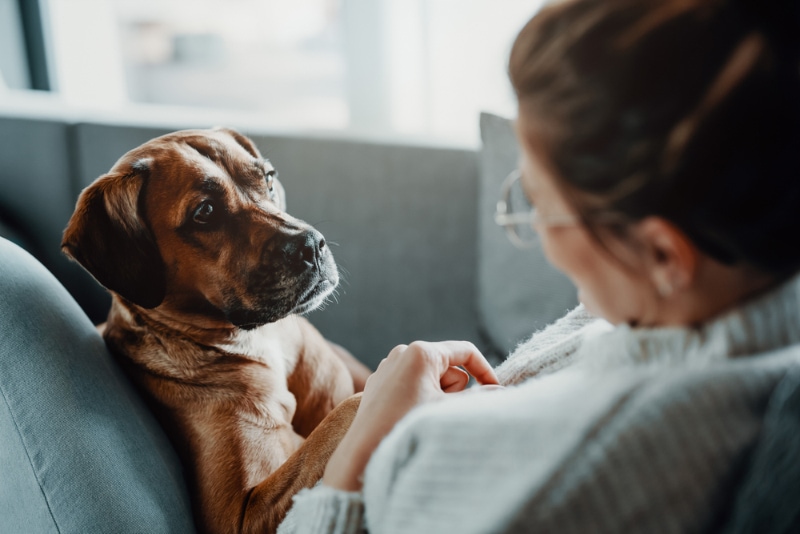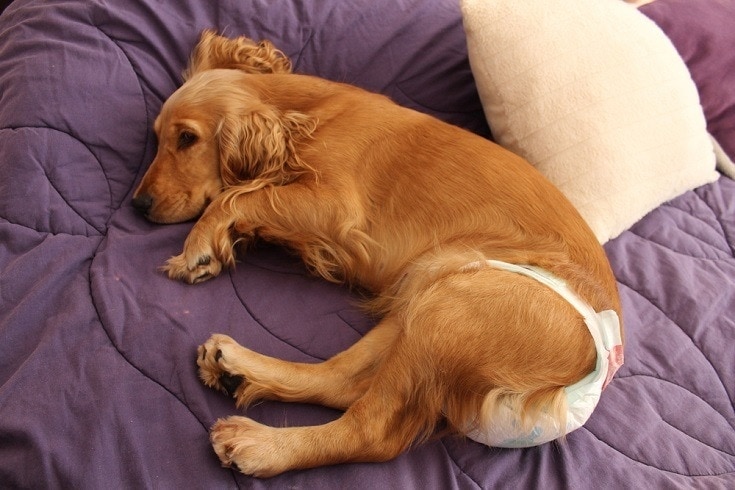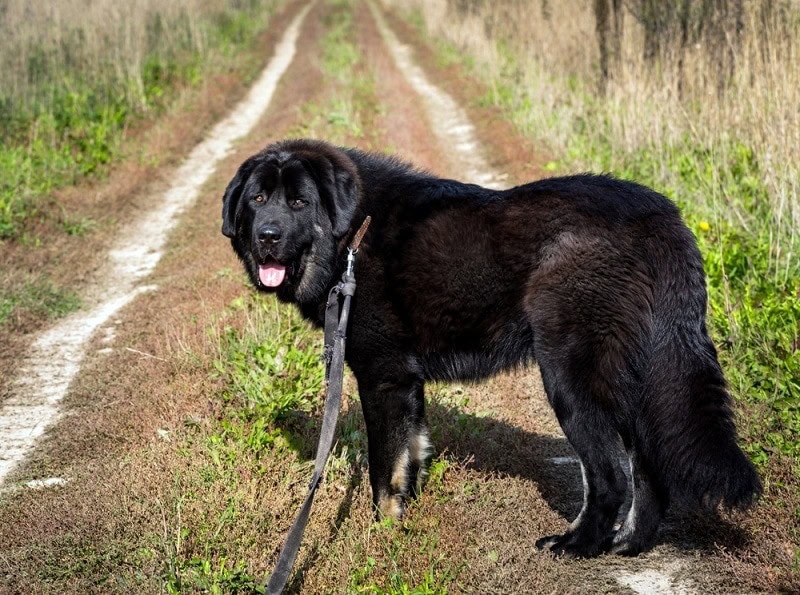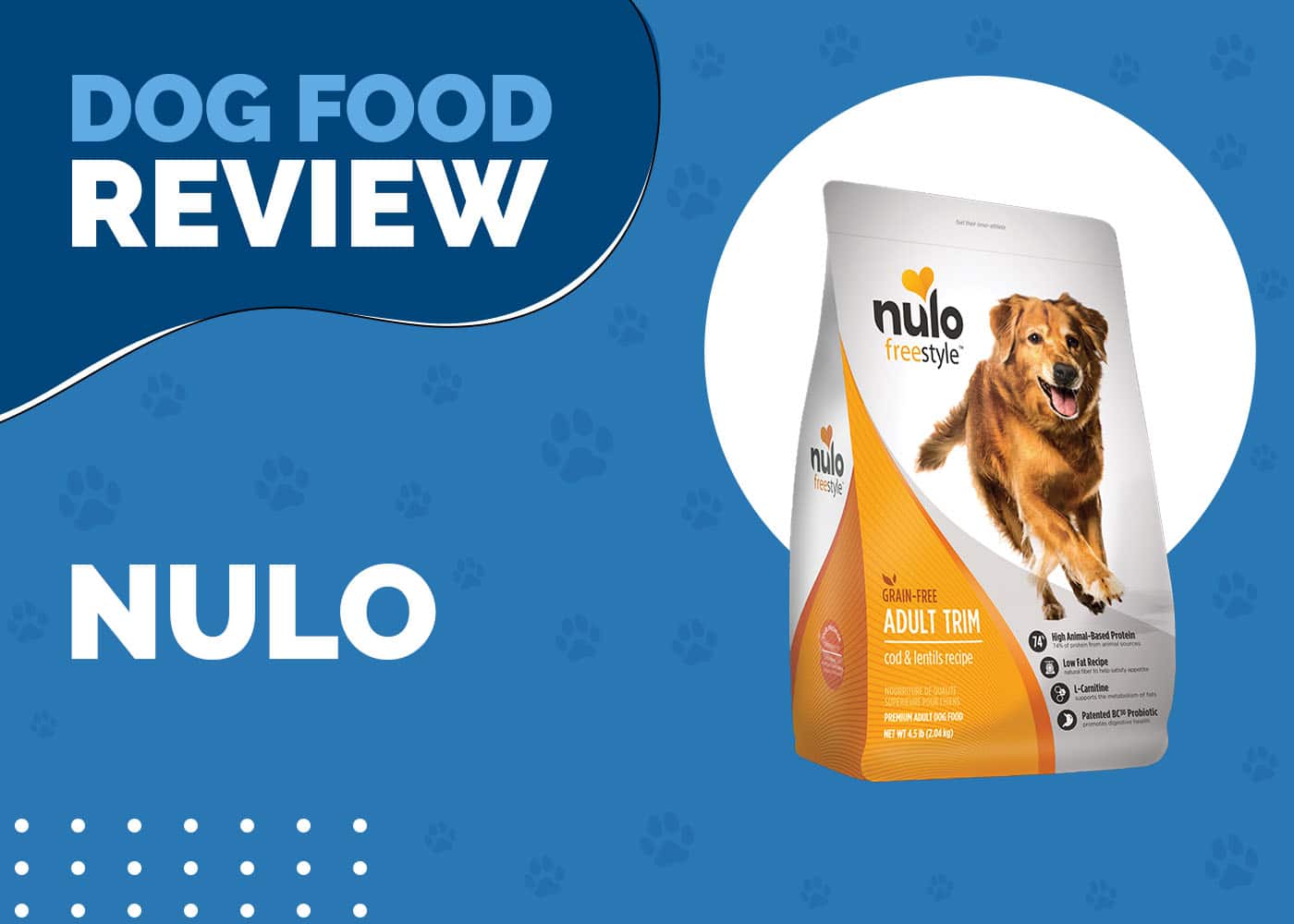What to Do When Your Dog is in Heat: 8 Vet Approved Comfort & Care Tips

Updated on

When your unspayed female dog enters her heat cycle, this can be a stressful time for you both. She will go through both physical and mental changes at this time, but you will also see other dogs behave in unusual ways when they are around her. When a female dog is in heat, her body undergoes hormonal and physical changes making this a very confusing and stressful time for her, so your job should be making her feel comfortable and more at ease.
Here’s what to do when your dog is in heat.
When Does a Female Dog go into Heat
A female dog can be between 6 and 24 months old when she goes through her first heat cycle. Smaller dogs can go into heat earlier, and large and giant breeds might not have their first heat cycle until they are about 2 years old. Most female dogs enter their heat cycle about every 6 months, usually 2 times a year, and the heat cycle can last between 2 to 4 weeks.
- Bloody discharge
- Swollen genitals
- Excessive grooming and licking of the genitals Si
- Frequent urination
- Physically responsive to male dogs
- Raising her hindquarters and holding her tail close to her body
- Agitated, aggressive, and easily distracted
 The 8 Ways to Help a Dog in Heat:
The 8 Ways to Help a Dog in Heat:
Here are 8 tips and tricks to help you and your dog while she’s in heat:
1. Use a diaper

This tip might sound weird, but if you put a diaper on your female dog, it can help prevent her from spreading her scent and discharge around your house. All kinds of disposable diapers are available, including some for small dogs, and reusable diapers for large dogs. Some female dogs are very meticulous about keeping themselves clean, so this step might be unnecessary, so use your own judgment.
2. Tire her out
Make sure you exercise your dog a lot, which will help distract her and tire her out but consider ways of getting her to move inside your home. While your dog is still not receptive right now it is safer to avoid bringing her outside. Try to engage in play with her a couple of times during the day. Occupy her with lots of exercise and playtime as it can help keep her calm and expend some of her energy.
3. Give her love and support

Your dog may enjoy extra attention from you, so be sure to spend more time petting, cuddling, and playing with her. She’ll appreciate it if you talk to her and brush her more often as it will help to make her feel calmer and more comfortable. If she seems sleepy, do give her time to sleep without interruptions.
4. Use calming treats, scents, and sounds
There are treats available that are designed to calm anxious and stressed dogs without making them drowsy. You can ensure her environment is quiet, turn the volume down on the TV and make sure the children lower their voices. You could consider using a dog speaker that plays music designed to reduce stress or use a spray that is meant to calm anxious dogs.
- We reviewed the best calming dog treats – Check out our top picks here!
5. Distract her

Use toys or treats that encourage lots of time chewing, like a chew toy or a ball with treats. The more time she spends occupied with playing and chewing, the less she’ll feel anxious or stressed.
6. Supervise when in the yard
You should never leave your dog alone when she’s outside and be sure that your yard is secured with no chance for a male dog to find a way in. Having said that, male dogs can be exceptionally ingenious in finding their way to a female dog in heat, so stay with her at all times. You should also make sure that her microchip and dog tags are up to date as she might attempt to run away.
7. Keep her on a leash

While the recommendation is to take your female dog for shorter walks, you must never take her off-leash. No matter how well-trained she is, there’s always the risk that she might attempt to run away. If she doesn’t mind a doggy diaper or a belly band, these offer an extra layer of security in case she is approached by an intact male dog while out with you.
- Related Read: Best Leash for Dogs That Pull
8. Surgery for your dog
The final and most permanent solution is to have your female dog spayed.
Other than stopping the heat cycle and preventing unwanted pregnancies, another advantage of spaying your dog is that it can help prolong her life. Spaying helps prevent serious health conditions in the future and can lessen any aggressive behavior, and any urges for your dog to run away. Your dog will also be much less anxious, not to mention less stress for yourself.
It’s advised that you should have your female dog spayed before she has her first heat cycle, but it is generally recommended to spay your dog by 6 months of age.
Conclusion
If you’re wondering what to do when your dog gets her period or what to do when your dog is in heat, we hope we’ve answered your questions! If you decide to have your dog spayed, then most of these tips are unnecessary, and you and your dog will have a much less stressful life together. However, taking care of your dog and, in some cases, just leaving her alone could prove to be the only thing she needs at this time. You want your dog to be happy and comfortable, and hopefully, these suggestions will help you both during this challenging time.
See Also:
- 10 Best Dog Grooming Gloves – Reviews & Top Picks
- 4 DIY Whelping Boxes You Can Build Today (With Pictures)
Featured Image Credit: MT-R, Shutterstock


 The 8 Ways to Help a Dog in Heat:
The 8 Ways to Help a Dog in Heat:









